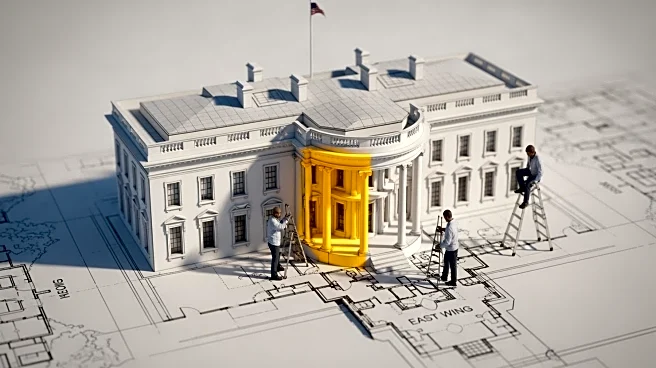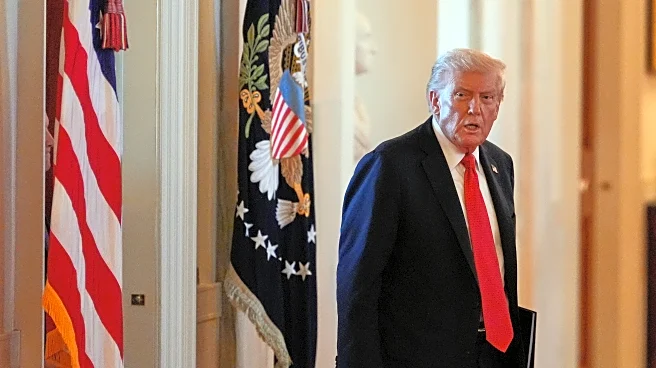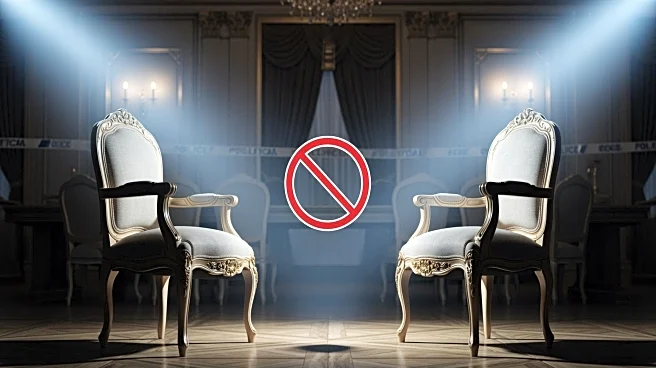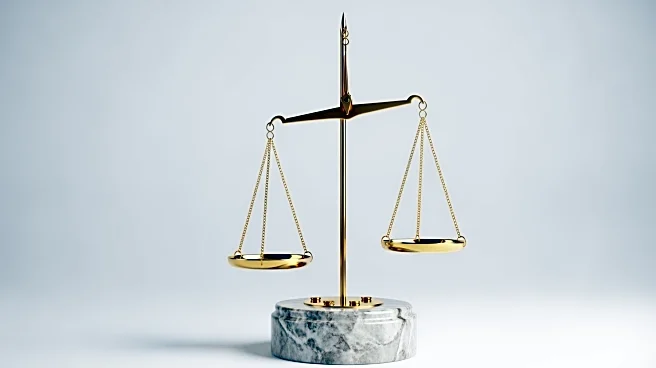What's Happening?
President Donald Trump has commenced a significant renovation project at the White House, involving the demolition of the East Wing to construct a new ballroom. This development marks the first major construction
ordered by a president in nearly eight decades. The new ballroom, designed to reflect the neoclassical theme of the White House, will feature luxurious elements such as gold and crystal chandeliers, gilded Corinthian columns, and a checkered marble floor. The project, estimated to cost $200 million, is funded by private interests, including a settlement from YouTube. The construction has sparked discussions about the preservation of the historic building and the balance between modernization and historical integrity.
Why It's Important?
The renovation project at the White House is significant as it represents a major alteration to a historic national landmark. The decision to demolish part of the East Wing, traditionally the domain of the first lady, raises questions about the preservation of historical architecture and the influence of private funding in public projects. The ballroom's construction, funded by private donors, highlights potential ethical concerns regarding access and influence over the presidency. This development could set a precedent for future modifications to the White House, impacting how historical sites are managed and modernized.
What's Next?
As the construction progresses, it is expected to draw reactions from various stakeholders, including historians, preservationists, and political figures. The project may lead to further discussions on the role of private funding in public renovations and the ethical implications of such financial contributions. Additionally, the displacement of the first lady's offices may prompt a reevaluation of the traditional roles and spaces within the White House. The completion of the ballroom could also influence future events and gatherings hosted at the White House, potentially altering its function as a venue for state and public events.
Beyond the Headlines
The renovation project at the White House could have long-term implications for the preservation of historical sites in the U.S. The decision to modernize a part of the White House may encourage similar projects at other historic landmarks, raising questions about the balance between maintaining historical integrity and accommodating modern needs. The involvement of private donors in funding public projects could also lead to increased scrutiny and calls for transparency in how such contributions are managed and utilized.













